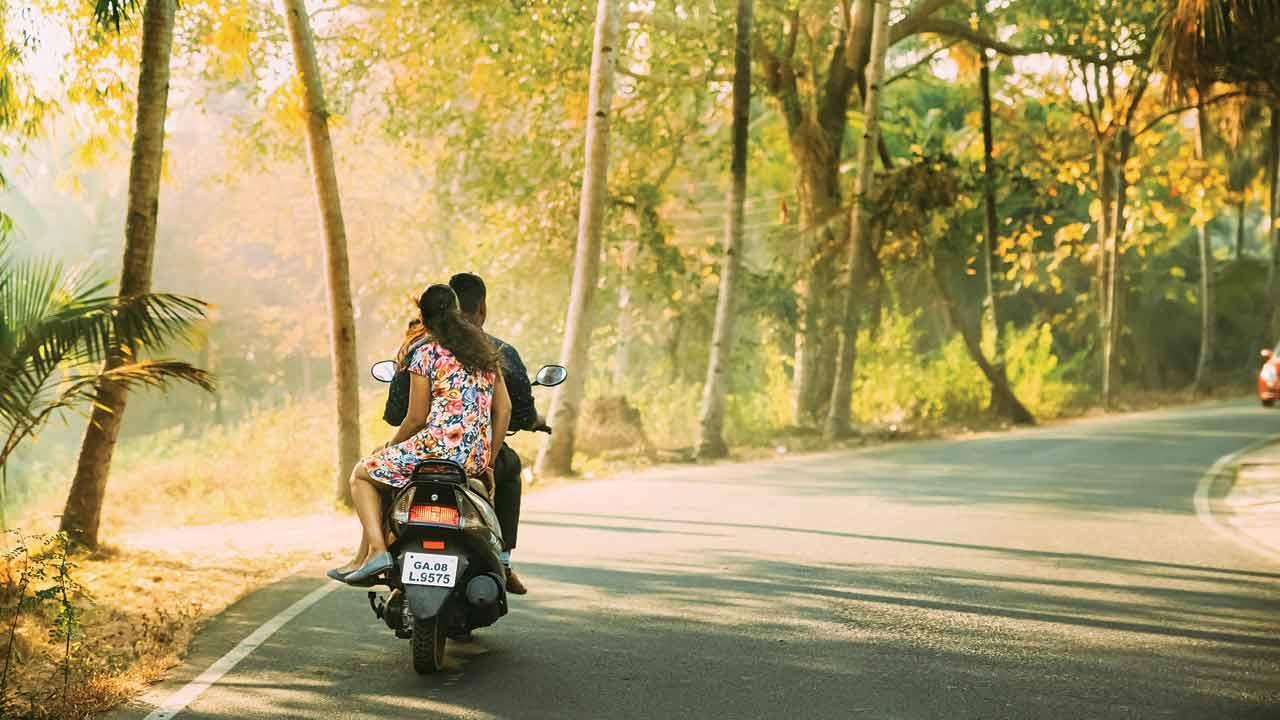We might be close to the first generation since industrial revolution to migrate for reasons beyond proximity to work alone

Getting too used to periodic Goa breaks, about a decade ago, I noticed Bombay/Delhi friends moving to Goa altogether. Representation pic
I guess the Goa you know depends on who you are - how old, to begin with. And then where you are from; and exactly what you have in mind, when you intend to visit.
ADVERTISEMENT
To a whole lot of temporarily/permanently single Indians (mainly from the North, but South as well), especially over the past couple of decades, Goa equals a Holi-like extended license for carefree, round-the-clock boozy behaviour - exactly what you think of, when you hear, say, Ibiza, Vegas, Thailand, etc.
The opposite of this is the Goa of honeymooners, that you instantly spot with young women on the beach in a bikini, sarong, and both hands - pretty much from wrist to the elbow - serving as a bangle stand.
This brings to Goa a whole lot of desi tourism. To a point that soon enough you may find the best butter/tandoori chicken or shudh shakahari (‘pure vegetarian’) restaurants, south of Vindhyas, in Candolim/Calangute!
It’s no surprise that while the pandemic totally ate up hospitality business, forcing hotels world over to slash room rates by half, the demand and tariff for Goa only doubled. Because, you know, it’s Goa, after all - for some reason everyone feels safe in the open, around the familiar.
The emergence of this Goa, chiefly around the ’80s, is often attributed to the Taj group of hotels that saw potential in the state as a holiday destination and set up Fort Aguada in the ’70s.
Up until then, Goa was largely seen as a place for backpackers and hippies, seeking spirituality among substances and spirits by the sea. That said, can’t deny the influence of the film Dil Chahta Hai (2001) in boosting family tourism either.
There’s then the Goa of ‘susegaad’ Goans, that involve none of the above. And who you only meet at parties (because they’re probably serving you), or driving you around in cabs that cost the same as your flight ticket.
What’s Goa for Bombaywallas, and increasingly so, rich Delhi-ites? Relatively cheaper real-estate to build a holiday home, or long vacation, to escape from the dense cities that you often deserve an off-time from, while a cultural/nightlife is also a few minutes away (unlike, maybe, Lakshadweep or Andaman & Nicobar!).
Why do people live in cities like Delhi and Bombay, bursting at the seams anyway? Because work takes them there. Which explains that while India is indeed the world’s second most populated country - as per density of population, it does not even feature in top 10. There’s actually enough space. We just choose to pack ourselves into the few metropolises and state capitals.
Getting too used to periodic Goa breaks, about a decade ago, I noticed Bombay/Delhi friends moving to Goa altogether. But what’ll you do there, I’d ask. Open a shack or bar, maybe? Isn’t that what everyone wants to do?
I figured though, whenever I’d meet them, all they ever did was invite me over to their lovely life that they’d never tire of boasting about. I mean, really, you moved all the way, so you could hang out with me?
Big city is also a personality type. The post-industrial revolution rhythm of hard-work and socialising - besides competitive schools, if you have kids; and top-class medical facilities, if you’re older - is simply a hard cycle to break from, after a certain age perhaps.
To be fair, some of these Goa friends are still there. We’ve just lost touch. Is it possible to be stuffed back into apartments, once you’ve embraced much nature, shanti, and solitude? Probably not. And there are those perennially planning to settle into organic/potato farming, once they’ve settled the bills that only keep piling up, for them to ever act upon their plan.
What did the pandemic do to this lot, in particular? Were some of them compelled to step back a little and look closely at their four walls, windows, and the road below that’d go mad with honking traffic, once things opened up? Did that Raheja/Kukreja rent/EMI even seem worth it?
Especially for those with jobs that don’t involve punching in and punching out of an office at predetermined hours - namely ones in creative industries, to start with? Are you as good in Goa, as you’d be in Versova? Does it matter where you work from, if there is phone, computer, WiFi, so you can afford roti, kapda and makaan?
For a lot of people around me, Bombay to Goa started seeming like a mass exodus of sorts in 2020. While small, we often forget, Goa is still a state - and not just a state of mind!
Candolim is a small town. Panjim is a city. Where were people I knew en masse moving to - occupying pretty homes, by the street, and building a social life alongside nature? As I saw it, to villages -Assagao, Siolim, etc - with proper panchayats and sometimes, rattled neighbours.
Is that the universal, Gandhian future, because technology for once has made it possible? Maybe not in our lifetime, but surely at some point. Just that Goa and its villages (and ones that follow) should be able to cope.
Mayank Shekhar attempts to make sense of mass culture. He tweets @mayankw14. Send your feedback to mailbag@mid-day.com
The views expressed in this column are the individual’s and don’t represent those of the paper.
 Subscribe today by clicking the link and stay updated with the latest news!" Click here!
Subscribe today by clicking the link and stay updated with the latest news!" Click here!






